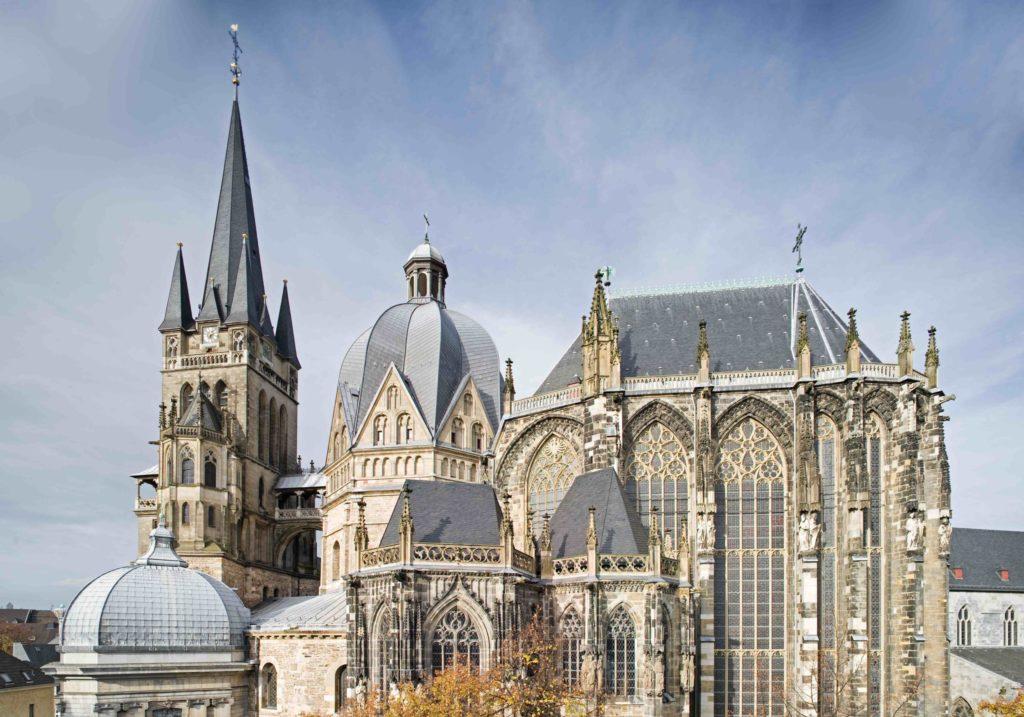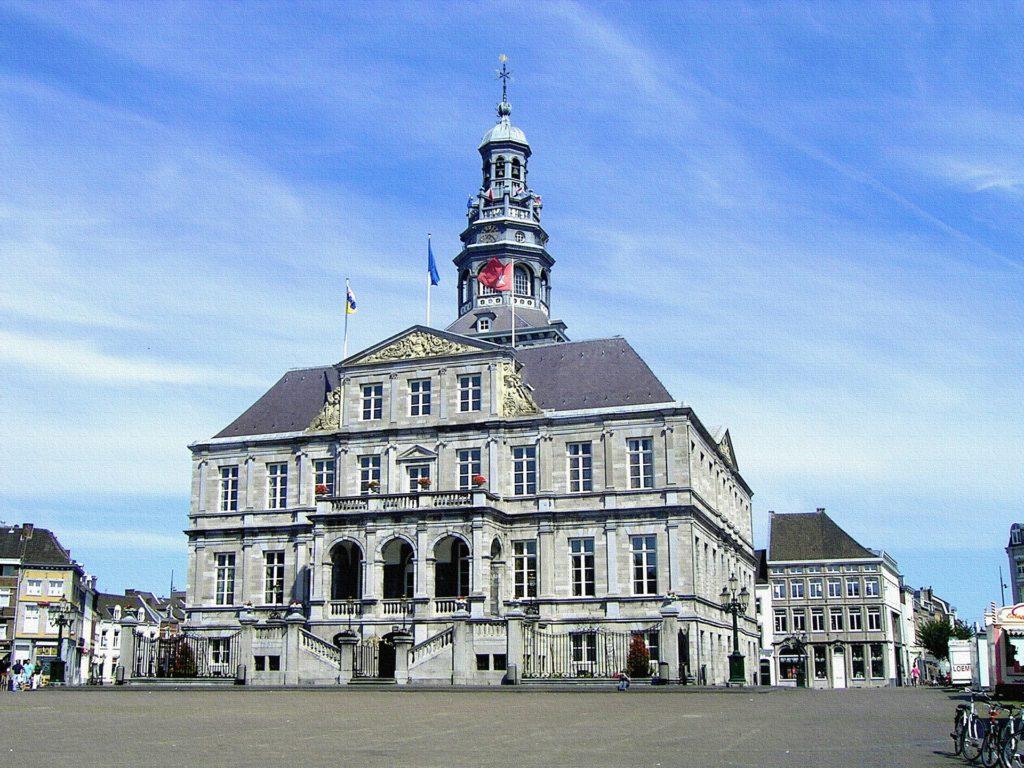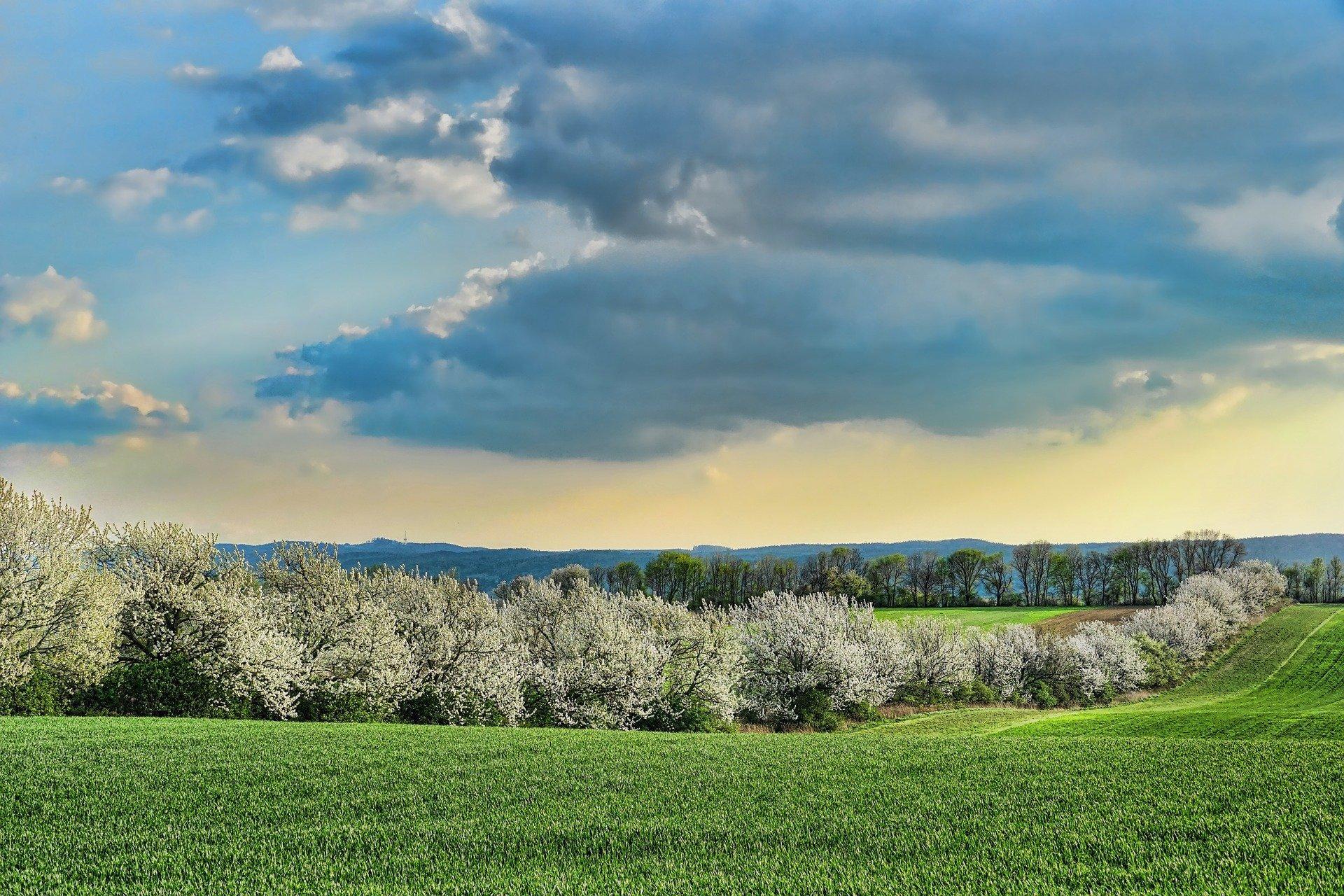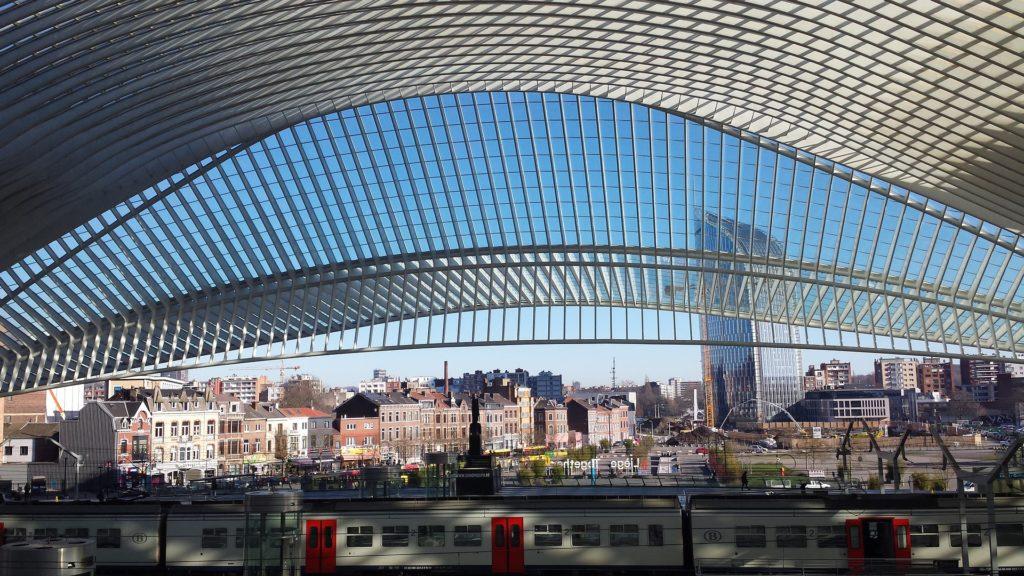With picturesque villlages and urban epicentres in their respective German, Dutch, Flemish, Walloon and East Belgian flavours, a multitude of options are available within just a short walk, cycle or ride across the border.Find out what arriving, living and/or working is like in and around Region Aachen , Dutch Limburg, Belgian Limburg, East Belgium and Liège.
If you are looking for tourist information, go to the vacation in the heart of Europe website. For in-depth understanding of your new home, head over to our section on intercultural learning for some interesting insights.
Brief (eu)regional characteristics
Aachen is first, and not only on our list. According to Internations, Aachen is even the Best Expat City in Germany, ranking very high on employability. To remain with top-rankings, the city did not only skip its title as the bathing town “Bad Aachen” to stay first in the alphabet. City and universities cooperate and co-create services like the Akademische Auslandsamt for RWTH university students and staff. It greatly facilitates the registration of third-state nationals working and studying in Aachen.
Aachen, Oche, Aken, Aix-la-Chapelle, Akwizgran – Emperor Charlemagnes former European capital has many international names. Check out Study In Germany’s view on Aachen compared to other German student cities and pick up some helpful tips (in German) from iamexpat.de. As the Study In Germany website puts it: “Its prestigious technical college, central location in Europe and agreeable size have made Aachen a magnet for international students.”
You might have trouble finding something in this westernmost German city, information in English on living and working in Aachen (by Spraachen.org) will help you out.
If you want more, find more information on the “Aachen-Wiki” (DE) or find the Use-it map for young travellers, by Bürgerstiftung Aachen.
Herzogenrath (DE) and Kerkrade (NL) share a unique municipal cooperation “Eurode”. Schools like Gesamtschule Herzogenrath shares bilingual German and Dutch education, and Eurode also shares the same street for more than two kilometres (Neustraße/Nieuwstraat), the Eurode Business Centre (DE/NL) – and a common dialect.
To call Monschau the pearl of the Eifel is certainly not too much of a promise. You can reach this iconic site peppered with half-timbered houses by cycling along the Vennbahn – a “spaghetti-shaped piece of Belgium” (The Tim Traveller), which weaves it’s through Belgium’s Ardennes and Germany`s Eifel mountains.
Düren (German only) is the gateway to the (Rur-)Eifel, the hillsides, forests and lakes of and Kreis Düren (see website “seen-und-entdecken“). The Eifel “mountains”are a popular tourist destination with places like Nideggen and the national park gate Heimbach. The district Kreis Düren (German only) has also a long tradition in paper production and features a paper museum (German only).
Remarkably, the whole Kreis Düren features free-of-charge childcare with the Kita-Navigator map (in German). For an altenative lifestyle of combined living in working in Düren, PrymPark is a remarkable Co-housing project (in German) including a swimming pond. Head to additional information in German in our co-working section.
For small children, Bubenheimer Spieleland a small-scale theme park with a labyrinth made of corn is just close by . Or go for a swim in beautiful Lake Düren or nearby Echtzer See. For Christmas, note the huge nativity scene, covering half the church in little Drove (car advisable). If this impressive scenery was an inspiration for collecting your own scnerey of half-timbered pottery hosues, find the in Töpfereimuseum Langerwehe. Not far from both Jülich and Düren, find the world’s largest artifical hill Sophienhöhe.
Support especially for international newcomers is provided by places such as Café International (Protestant) and Caritas Düren (Catholic). Affiliated to the two predominant churches, both provide neutral services and welcome people of all faiths (or without), in several languages.
For more impressions, head to this video capturing the natural and cultural highlights. For information on how to spend your working or weekend days along the the district and Rur-river, head to popular local broadcaster Radio Rur (German only).
Jülich welcomes you home to a huge research campus with nearly 6,000 employees, Jülich literally embeds high-tech in a beautiful landscape. Follow their digital tour with multiple filters for research and projects.
“Mount” Sophienhöhe is the world’s largest artificial hill. Also the Rur river (not to be confused with the Ruhr river!) and several lakes make for interesting leisure activities. Note that within the whole Kreis Düren district, childcare is free of charge and can be found with the map or Kita-Navigator. (Not) only with little children, Brückenkopfpark combines zoo, theme park and historic heritage in an Napoleonic Jülich fortress – right next to the charming city centre.
Heinsberg allows for co-working at “werkbank” and relaxing at the district network of “lucky places” or the beach of “Lago Laprello” which is located close to the city centre.
Cross-border hopping makes for a great quality of life where the Rur river leaves Germany to merge into the Meuse in “Roer”mond with even more lakes and opportunities for sailing and canoeing.
Find an overview on attractive employers and hidden champions at living in and around Heinsberg – with interesting statistics and brief overviews such as an average of 150€/square meter for housing plots. Leben-im-westen.de also provides an overview on all associations and clubs in Kreis Heinsberg.
Heinsberg, as the westernmost district of Germany, is home to the famous Verpoorten Advocaat. This atypical name also reveals the proximity to the surrounding Netherlands.
As a historic particularity, Selfkant municipality in the extreme west of Heinsberg was under Dutch control from 1949-1963. At this time, the small municipality lost it’s connection to the German railway system but retained the beautiful historic Selfkantbahn.
Euskirchen (German only) hosts a true paradise of palms. This makes it clear why the Romans loved to have their spa in nearby Zülpich. This historic town still allows for an authentic bath, with the museum Römerbad and Wassersportsee Zülpich.
If you want to learn about life in more recent “ancient” times, visit Freilichtmuseum Kommmern with its half-timbered houses collected from all of the Rhineland. If you are more than a tourist in Kreis Euskirchen, find information in German on the leading branches in this district and the Kita-Navigator for childcare.
For more current news and tips on life between Erft and Eifel Radio Euskirchen provides local information in German. If you want to integreat or want to help others to “integreat“, the central platform for volunteering in and around Euskirchen is a helpful contact point.
The world’s first copper-city and Germany’s hidden carnival capital (third largest parade), Stolberg and Eschweiler are connected by the Inde river. With employability in pharma-research, these municipalities charm with villages from ‘bluestone’ houses such as Breinig and Dorff, close to Kornelimünster.
If you liked Monschau, you will enjoy these pitoresque towns in the Eifel mountains. Blankenheim is famous for the “Ahrquelle” – a half-timbered house, hosting the natural source of the Ahr river (with its vineyards, German only). The Spa town of Bad Münstereifel is famous for its Heino-Café and cakes, and has recently opened a large designer city outlet in the half-timbered houses of its old town.


By loading the video, you agree to YouTube's privacy policy.
Learn more
Eupen is one of Europe’s smallest capital – featuring an own parliament, prime minister – and the seat of the Euregio Meuse-Rhine. Heart to the German-speaking community in Belgium, you will find a mixture of German and French influences in a picturesque town with a direct ICE connection to Brussels and the Belgian seaside for only €10 with a Go Pass, find out more in our public transport section.
This high moor is closest to Siberian wideness you can probably find in your region. With the indoor ski centre Landgraaf and the sites in Eifel, Hohes Venn offers the best infrastructure for skiing.
Neutral-Moresnet was part of Prussia and the Netherlands and Belgium – all at the same time. This tiny, self governing triangle close to Drielandenpunt had quite some geopolitical importance and chose Esperanto as its official language. Still featuring a unique dialect between German, French and Flemish, Moresnet and Kelmis can be reached by bus from Aachen and the ticket is charged at a normal city fare.

Maastricht is the capital of the Dutch province of Limburg – and probably the country’s oldest and (in proportion to its population) most international city. Looking at the archcitecture, you can see how much this city was connected to nearby Liège, and today it is only a short train ride in between these very different cities. To make Maastricht yours, best head for mymaastricht.nl illustrating every aspect of life in this small metropolis.
Maastricht is the most popular place to come for shopping throughout the whole of your new region, and astonishes with the marvellous beauty of its city centre and river banks.
Home to the Maastricht Treaty which constituted the European Union, Maastricht hosts Zuyd Hogeschool and Maastricht University. It is the youngest and most international university in the Netherlands, featuring a large English-speaking profile in both studying and working possibilities. If you are looking for housing, or simply want to get in touch with your (new) neighbourhood, find all possibilities on MatchMaastricht.
Heerlen is the largest city in the mini-metropolis of “Parkstad” (200,000 inhabitants). Close to Aachen and Maastricht at the same time, you will find world-class leisure facilities, comparably high hills (with indoor-skiing in Landgraaf) and some affordable fares for housing. Heerlen is famous for the Nederlands Mijnmuseum (Dutch only), the Open University, the country’s central office for statistics and the cross-border business park Avantis.
With a dynamic street art scene, Heerlen was starting point to streetartcities.com that lists masterpieces across the planet. Find detailed street-art maps for nearly all cities in the Euregio Meuse Rhine.
Beautiful Valkenburg is built from limestone, creating a city yellow as French Bourgondia and large caves all around.
It is the only Dutch city with a hilltop castle on an actual hill – and a toboggan run /bobsleigh track accesible by cable car.
At the junction where the Roer / Rur river literally floats into the Maas / Meuse, you find a beautiful city surrounded by a system of lakes and rivers, in between Germany and Belgium close to the beautiful white city of Thorn.
Most visitors tend to bypass this beauty, however, and head for the large designer outlet on the edge of the inner city.
Sittard-Geleen could host an own foreign ministry – it borders with Germany in the east and with Belgium in the west. The Brightlands Chemelot campus attracts a lot of internationals – more than 1,000 of which live just across the border.
In this city right next to the German border, find the Netherland’s most beautiful Gaia Zoo and breathtaking Columbus earth centre at Museumsplein Limburg.
Kerkrade (NL) and Herzogenrath (DE) share two kilometres of Nieuwstraat / Neustraße. The houses on the left Dutch, the ones on the right German.
In the first cross-border municipality “Eurode”, you also find the cross-border business park “Eurode Business Centre“. People sharing the same office can still work in two different countries and with different social security.

By loading the video, you agree to YouTube's privacy policy.
Learn more

Home to Europe’s largest Japanese garden, famous for its fashion and street art, Hasselt hosts both universities located in the Belgian province of Limburg as well as the Corda Campus – a large incubator for entrepreneurs.
After experimenting with free public transport, costs for a bus ride are at only €0.60 and still free for all passengers under 20 years old.
Genk has a multicultural mining history – with one of the largest mosques in Belgium and high numbers of Italian, Polish, Turkish, Moroccan in its population.
Living in Genk is a mosaic of cultures and a labyrinth for lovers of mining culture.
Tongeren is Belgium’s oldest city (video), situated not far from the Netherlands ‘ oldest city, Maastricht. Both are connected by the beautiful Jeker-Valley, in which Dutch, Flemish, Walloon, and again Flemish villages all add their flavour to your next bicycle trip.
Home to the Jonagold apple, Sint-Truiden also features the typical ensemble of a “Grote Markt” with “Belfort” tower and its very own Begijnhof, which is now a UNESCO World Heritage site.

By loading the video, you agree to YouTube's privacy policy.
Learn more
Visitez Liège – this is the proud capital – and by far the largest metropolis in all of Wallonia.
Liège toghether enlists everything you need to know to live and work in this city.
If you want to (re-)discover the city for a trip, for living or working, the Ultimate guide for Erasmus students in Liège written by Jakub from Poland is one way to become acquainted with la Cité Ardente.
With a population of 55,000 Verviers features an interesting old town with historical buildings from the high times of textile industry. The Weser river and several impressive fountains make water very present in this medium-sized city.
Spa is a laid-back thermal town in the Ardenne mountains, featuring quaint city centre, the birthplace of the famous Spa water brand (No 1 in Flanders and the Netherlands). It is, of course – also home to a large Spa and Wellness area, owing its name to this very town.
Michael Schumacher loved the Spa Formula 1 circuit – not least as weather conditions where closest to his hometown Kerpen-Manheim, just a few kilometres behind Düren.
Limbourg is a tiny town with great history. The name of both provinces, Dutch and Belgian Limburg got their name from this little castle-town situated on a hill. You can reach the foot of this hill easily by train.
Plombières municipality makes for the a great “small holiday” in and around Aachen. The municipality nowadays is mostly French-speaking, but many residents, especially around Gemmenich village, speak German and Flemish or their very own dialect, which combines all of the three at once.
Drielandenpunt “mountain”, a “green cathedral” and mining history are among the major sights.
This small-town “City of geese” makes for a good stop on the way from Maastricht to Liège.
Following the little river Jeker from Maastricht’s old town, you will cross a large canal built parallel to the Maas, a little piece of Flanders, and several picturesque Walloon villages. Wikipedia provides more information in Dutch and French to help you plan a multicultural cycling trip.


